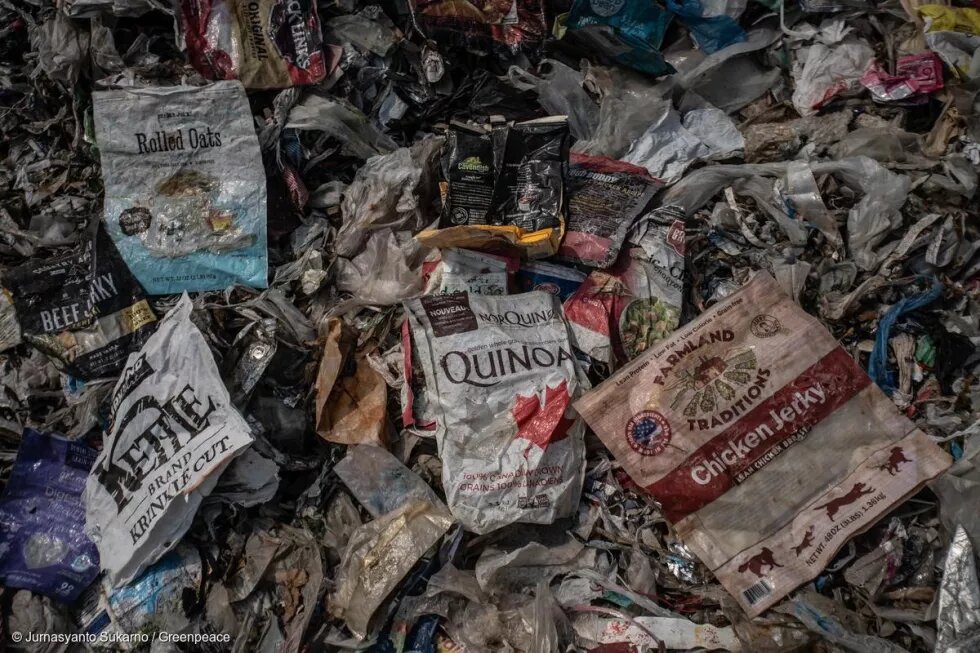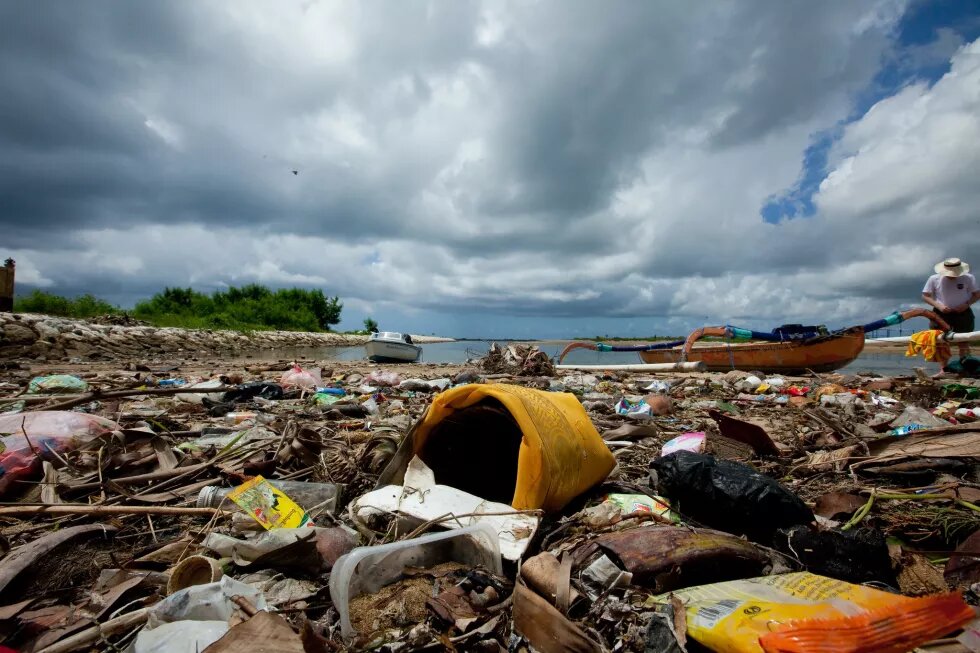
Over the past few years, people all over the world become much more aware about the plastic crisis. From the excessive use of its materials, suffered animal due to ocean pollution, to the issue of microplastics entering our food chain and human body, plastic problem became one of the environmental challenges that is really close to the society. A lot of global organizations, such as the United Nations and World Economic Forum, put ‘plastic’ as an important matter to be heavily discussed and solved, even each of these actors has a different perspective on the solution.

Plastic Crisis in Indonesia
This is also the case for Indonesia, the country which was nominated as the world’s second-largest plastic polluters in the ocean[1]. In 2018, some of the plastic-related crisis have become trending topics in social media or online news platform. Public was shocked when there was a news on a dead sperm whale’s body at Wakatobi Shore in Southeast Sulawesi contained a pile of garbage including single use plastic bags which contaminated the ocean[2]. A similar case also occurred at Kulonprogo in Yogyakarta Province, but this time was a turtle[3]. It was expected that the turtle died stranded due to its digestive system clogged up by a lot of plastic waste. On top of that, one of the most iconic tourist destinations in Indonesia, Bali, heavily suffered from the plastic pollution when the video about a British diver swimming through a massive rubbish and plastic waste floating in Nusa Penida Water has gone viral[4]. The people in Indonesia started to realize that plastics becoming one of the biggest threats to this country’s nature.
While Indonesia is struggling with the crisis, foreign waste from developed countries are entering the country territory and furthermore exacerbating the situation. Indonesia’s plastic waste import sharply rose from 10,000 tons per month in late-2017 to 35,000 tons per month in late-2018[5]. Even the argument for this practice was to improve the recycling industries within the country, the findings showed that most of the imported waste were in poor condition and were not worth for recycling. Those scraps then usually moved from the import factories to the landfill or unoccupied land around the community settlement. In some cases, these waste could be burned in an open area.
All of these challenges have made the Indonesian government set the ambitious target in tackling plastic pollution within the country. Through a presidential decree, the government states that the national waste should be reduced from the upstream by 30% and to manage the waste produced by 70% in 2025[6]. Furthermore, the Coordinating Ministry for Maritime Affairs also set the reduction target of plastic pollution in the ocean by 70% in 2025. One important question then arises. What needs to be done to win this battle against plastic pollution in Indonesia?
The Trend is Growing
Over the past decade, a lot of movements from community emerge in reducing the use of disposable plastics, especially bottles, straws and plastic bags. Based on behavioral change, these initiatives usually encourage people to use tumblers, carry their own bags when shopping at the supermarket, and refuse to use plastic straws or replace them with reusable ones. The campaign against single-use plastics grew from small projects initiated by NGOs or local communities into a trend followed by young urban people in Jakarta, Bandung, and other big cities in Indonesia. The discussions on zero-waste and sustainable lifestyle has taken arise among urban communities as well. Seeing this positive development within the society, we can be optimistic that the crisis in Indonesia can be resolved in the future. However, is the initiative from the community alone sufficient to solve the national plastic waste problem?
Certainly, actions on the individual or community level do not necessarily change the whole situation in the country. The significant contribution from the government and industry are required to solve the plastic crisis in Indonesia. This view was also adopted by the national government and manifested in the vision of waste management strategy towards the year of 2025. Some of the key factors in the strategic plan are; raising public awareness through education and campaigns, improving the waste management system so the plastics would not leak into the ocean, and put the companies to be responsible in managing the waste from their products and developing a reduction plan in plastics production. These elements show us that the responsibility of plastic crisis in Indonesia should not only belong to the communities, but also to the public and private sectors as well.
From Communities to Government
Through the Waste Management Law of 2008 (No. 18/2008), the government already gave the mandate to all of stakeholders to take part and contribute in solving the national challenges on waste and plastics. Municipal authorities are required to develop a waste management plans in their respective regions as well as deliver its implementation, communities are asked to segregate their household waste, and industries are mandated to apply the concept of Extended Producer Responsibility (EPR) and be responsible for the waste from their products packaging. However, the reality is still far from the ideal vision.
The segregation policy is not supported by sufficient facilities provided by the local government. Oftentimes, the separated waste from the households is mixed again when transported and it moves straightly to the landfill. People do not feel encouraged then to comply with the existing regulation. Insufficient budget in the regional plan is often used as an excuse. However, some of the local governments showed their serious commitment in tackling this crisis by issuing the local law on single-use plastics ban. As an example, the Mayor of Banjarmasin (a city in South Kalimantan) claimed that the municipal government has prevented the use of 52 million plastic bags each month since the law has been implemented[7]. Bali became the first province in Indonesia to implement the ban of single-use plastics. We are still waiting for the central government to adopt these laws and apply it to the national level in order to achieve its ambitious target in reducing national waste production.
Roles of Industries
From the last ‘Our Ocean Conference’ which happened in Bali in 2018, Indonesia and the world did not see any serious commitment which followed through some detailed plans from any big corporations in Fast Moving Consumer Goods (FMCG) sector to provide the best solution in answering this crisis. Recycling industry and the recyclability of the delivered product were still the main focus of these companies to solve the global plastic problems. This was not deny the fact that the number of SUP packaging produced by these FMCG corporations steadily increases every year, as stated in ‘A Crisis of Convenience’[8] report published by Greenpeace International. We never can fill the gap between single-use plastic production and recycling capacity if this was the case. In the global scale, only 9% of plastics waste produced is recycled[9]
In Indonesian context, there is no derivative regulation yet regarding the EPR mechanism that becomes the obligation of the private sector to reduce and manage their waste, especially single-use plastics. This lack of regulation, either in the form of incentives or sanctions, might be the reason why industries seems to be escaping from this big responsibility.
Focus on Reduction
All of us could realize that the journey to reach free from plastic Indonesia is a very long process. While improving local and national waste management system, policies that focus on reduction can be an ideal solution. The ban of single-use plastics imposed by numbers of cities in Indonesia could be a good example to control the excessive use and production of single-use plastics. People need this kind of policies to be adopted in national level and not the so-called advanced technology like incinerator or ‘waste to energy program’ which already considered in the government even though they have a lot of negative impacts to the environment.
To significantly change the crisis on plastic waste, we cannot just focus on the management in the downstream level, such as increasing our recycling rate within the country. How the problems can be solved if the single-use plastics production in the upstream level is not controlled? To do so, Indonesia needs a lot of improvement in several sectors.
First, the national government should make a bold action and impose the regulation in controlling the production of single use-plastics. It should be followed as well with the proper implementation. Furthermore, the waste management system which focuses on segregation concept in municipalities also need to be improved.
Second, the industries should take this matter as a serious situation and developing a strategy to phase out from single-use plastics and move into sustainable business practice which relies on refill and reuse system rather than other disposable packaging materials. For the initial phase, they should be more transparent for their plastic footprints and responsible for the pollution caused by the plastic packaging they produced.
Third, the support from the communities is also a contributing factor to solve the plastics problem in Indonesia. People can create demand for reducing single-use plastics production to the public and private sectors as well as grow the movement on zero-waste and sustainable lifestyle.
As long as the reduction does not become a main answer to respond this current situation, Indonesia cannot solve the plastic problems within its region. As an illustration, China which has a recycling rate of 25% - and far above our country - turns out to be still named as the country with the largest contributor of plastic waste in the world's oceans.
We all know that plastics crisis endangers our future, especially for the next generation. We have to do something starting from now, even it is just a small step. Be more responsible and mind your consumption pattern. Let this movement against single-use plastics become bigger and bigger so it would be heard by the government and industries and could pressure them to make impactful actions for a better future.
REFERENCES
[1] Jenna R. Jambeck, Supplementary Materials for : Plastic Waste Inputs From Land Into The Ocean, Science Mag 13 February 2015, Vol 347 Issue 6223
[2]6 kg of garbage found in dead whale’s stomach in Wakatobi - https://www.thejakartapost.com/news/2018/11/20/6-kg-of-garbage-found-in-dead-whales-stomach-in-wakatobi.html
[3] Kondisi Penyu yang Mati dengan Plastik di Perutnya di Kulonprogo - https://foto.tempo.co/read/69009/kondisi-penyu-yang-mati-dengan-plastik-di-perutnya-di-kulon-progo#foto-3
[4] Bali’s battle against plastic pollution - https://www.bbc.com/news/world-asia-43312464
[5] Data from the global plastics waste trade 2016-2018 and the offshore impact of China’s foreign waste import ban - http://www.greenpeace.org/eastasia/Global/eastasia/publications/campaigns/toxics/GPEA%20Plastic%20waste%20trade%20-%20research%20briefing-v1.pdf
[6] KLHK Susun Pedoman Pelaksana dari Perpres Pengelolaan Sampah - http://mediaindonesia.com/read/detail/152845-klhk-susun-pedoman-pelaksana-dari-perpres-pengelolaan-sampah (Indonesian ver.)
[7] Banjarmasin Prevents 52 Million Plastic Bags Use Each Month - https://kalsel.antaranews.com/berita/65692/banjarmasin-prevents-52-million-plastic-bags-use-each-month
[8] A Crisis of Convenience - https://www.greenpeace.org/international/publication/19007/a-crisis-of-convenience-the-corporations-behind-the-plastics-pollution-pandemic/
[9] A whopping 91% of plastics isn’t recycled - https://www.nationalgeographic.com/news/2017/07/plastic-produced-recycling-waste-ocean-trash-debris-environment/
